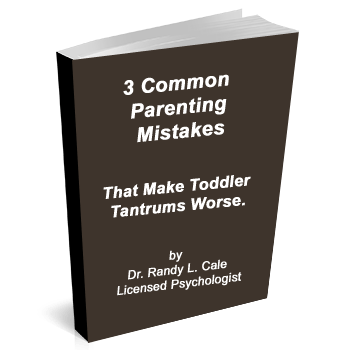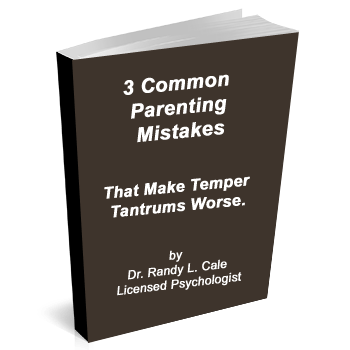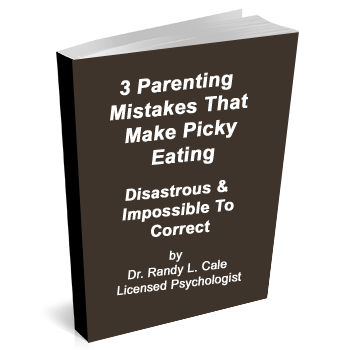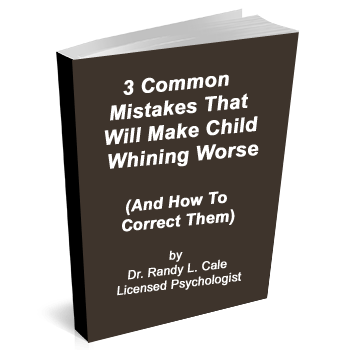 In my opinion, this is an undeniable YES!
In my opinion, this is an undeniable YES!
The data suggests that the average U.S. household is one where parents sleep for seven hours; children sleep for about eight hours, less than two hours are spent eating, and yet the TV is turned on for over seven hours.
Perhaps more shocking is the conclusion that the average school-aged child spends approximately 27 hours weekly watching TV. Overall, children spend more time watching TV than they spend at school. They spend more time watching TV than they sleep. They spend more time watching TV than they spend doing any other activity.
This is a problem! Here I will offer my thoughts on some reasonable guidelines to follow for developing your child’s creative and intellectual abilities, as well as promoting healthy habits.
So what is the deal with too much TV?
When this topic is discussed with parents, very few parents argue with the fact that many kids watch TV. However, there is a subtle way in which TV has become so ingrained in our daily habits, that the danger and the threat are routinely minimized.
Even though constantly questions are being raised about the impact of TV upon children, it is so pervasive in our society that we really seldom pause to consider how our children view TV and how their young brains are susceptible to the programming that television contains.
Have you ever noticed how a child watches TV? Their pupils dilate, they become engrossed in the story on the TV, and they have limited awareness of everything that is going on around them. You might say that they are “entranced” by the programming.
And this is precisely the danger! The entrance of a good cartoon, of a good movie, or any program can be a wonderful and healthy experience. Unfortunately, it can also be a dangerous experience, because there is little filtering that goes on as the content of the program is absorbed by the mind.
In a recent article by Jeanne Sather, featured on MSN Learning and Research, she points out that children’s TV shows contain about 20 acts of violence per hour. She also emphasizes that children end up watching a good percentage of adult programming, and she estimates that 40% of a six-year-old’s viewing time is spent watching adult programming, while about 80% of a twelve-year-old’s viewing time is spent watching adult programming.
Also, she emphasizes that the average American child will have watched 100,000 acts of televised violence, including 8,000 murders, by the time the child finishes sixth grade.
Now, let’s pause for a moment and consider a child being “entranced” by TV programming. While “entranced”, your son or daughter may watch 100,000 acts of violence. This is done without any filters, without any adult explanation.
Are you really comfortable with that? Is it really okay for children to be exposed to such violence, without some opportunity for explanation or greater understanding?
The growing body of research suggests that our answer should be a strong NO!
So What Is The Impact Of TV On Children?
 This issue has been debated in the literature for many years. Unfortunately, the debate seems to have, as is often the case, created more confusion than is necessary.
This issue has been debated in the literature for many years. Unfortunately, the debate seems to have, as is often the case, created more confusion than is necessary.
The facts are that violent TV programs have been shown to have several clear effects on children. In particular, the bulk of TV viewing contains fantasies and cartoons where there is violence and fighting and battles between good and evil.
The result of such repeated exposure is that children appear to become less sensitive to others being hurt, and less humane to the suffering of other humans and animals.
Secondly, children are often more fearful of the world around them, as they are constantly exposed to battles and to a sense that it is good versus evil. There is no sense of nurturing and creating a sense of well-being and safety.
Finally, children are more likely to act out in aggressive and harmful ways. This is particularly the case when children are exposed to aggressive programming.
So the bottom line is:
Repeated exposure to violent and aggressive TV programs is damaging to children. There certainly is programming available that is positive, beneficial, healthy, and promotes learning. However, the bulk of the time that children are watching television in most homes is relatively unsupervised and involves exposure to a range of unhealthy programming with violent and aggressive themes.
What Are The Options? Here Are My Suggestions:
1. Establish reasonable limits on TV time.
In my opinion, a reasonable limit is the maximum of one hour of television per day. Make sure that programming is positive, and that it is programming that you will support.
2. Don’t get into battles or negotiations over control of TV time.
How do you do this? You do this by purchasing some type of timer, which can be connected to the television. Either that or use a kitchen timer. When the timer goes off, TV time is over.
If there are arguments today over more TV time, simply remove all TV time come tomorrow. Just avoid getting into battles over this. Make certain that the consequence of arguing and negotiating is a loss of TV time completely tomorrow. But by all means, try to avoid the struggle or battle over who has control over the remote. Tomorrow, the remote will simply disappear, and no TV will be available.
3. Pay close attention to programming.
It becomes easy, in the midst of all the daily demands on your time, to focus on taking care of the laundry, cooking the meals, getting ready for soccer practice, or cleaning up the yard. With all of these demands, it is understandable that most parents are not attending carefully to TV programming.
The more firm limits are put on TV time, the easier it is to attend to the programming that children are watching. When this is attended to carefully, the 30 to 60 minutes in front of the TV can be more closely monitored and contained.
4. Make sure that the televisions are removed from the kids’ rooms.
 I am amazed by the number of households where children have TVs in their rooms. I am further amazed by how parents allow their kids to go to sleep while watching a video or having the TV turned on.
I am amazed by the number of households where children have TVs in their rooms. I am further amazed by how parents allow their kids to go to sleep while watching a video or having the TV turned on.
Some of you may become defensive upon reading these comments, and, yet, there is little question that this is a breeding ground for many unhealthy habits.
First of all, it is harder to have control over the TV if it is in their room. Secondly, they develop the habit of doing their homework while the TV is on. This is bad. Third, they often develop the habit of going to sleep while the TV is on. Their minds are being influenced by programs while they are vulnerable, and drifting off to sleep. Whom would you invite to join your kids in their dreams? I would suggest you don’t leave it up to those who choose late-night TV programming.
All of this involves opportunities for children to be immersed in a world where information is put into their worlds and where you have no control over it.
If you’re okay with that, then you are okay with that. What else can I say?
However, in my opinion, it is better to establish healthy habits that will serve your children throughout their childhood and into their adult years. I find it difficult to develop an argument for how having a TV on constantly is of value to either a child or an adult. It is a distraction. It feeds information that may or may not be what you want to go into their brains. Furthermore, it distracts us from living more and more in the present moment of our lives, and to enjoy living in that moment.
5. Be a healthy role model.
 Most of us are guilty of watching more TV than we should. Most of us know this, and yet, like our children, we tend to become apathetic and move into a state of acceptance, and eventually, we numb ourselves by using the TV as a way of relaxing and settling down at the end day.
Most of us are guilty of watching more TV than we should. Most of us know this, and yet, like our children, we tend to become apathetic and move into a state of acceptance, and eventually, we numb ourselves by using the TV as a way of relaxing and settling down at the end day.
If we want our children to develop healthy habits, then it is important to model this habit. A healthy habit is being engaged with our families, being engaged in our world, taking care of our minds and our bodies, and developing our abilities to the best of our potential.
When I research happiness and success, I find no literature that suggests that adults or children, who are successful and happy, find that their happiness comes from watching TV for extended periods of time.
Don’t get me wrong. I am not a maniac about TV. Certainly watching good programming can be healthy, beneficial, relaxing, and enjoyable. It is all a matter of degree.
I would encourage you to limit your own adult TV time to one hour, and then you become a model for your children. You will be using the time to take care of tasks around the home, engaging with the children, or taking care of yourself.
6. Focus extra time on new and creative family activities.
If the statistics are relatively accurate, and I suspect that they are, there are at least 25 hours of unproductive time that could be used in healthier ways. Certainly, this does not need to be “productive” in a sense of accomplishing things. But it could be used to engage in enjoyable and loving activities with the family. It could be used to learn to relax together, write in a journal, exercise, read a book or simply tell stories. The options are unlimited.
Concluding Remarks: Let’s be clear about this. This is not about creating a household where, in some kind of dictator-like fashion, you make TV a demon. It is not.
TV is potentially a wonderful source of information and programming. Yet, the violent, unhealthy programming dramatically outweighs programming on teaching and nurturing positive values and attitudes.
So all that I am suggesting is that you feel comfortable setting limits. Feel comfortable setting firm limits, and sticking to your guns. Then notice what happens!
 If you are interested in a powerful program that will guide you through the specific details of how to do this, I encourage you to check out the Effortless Daily Routines audio program you will find in my online store. This program is simple to apply, easy to understand, and most importantly…it works. It has been used with hundreds of families, who have turned chaos and struggle into calm and predictable routines without battles. You can do it! Click here to purchase Effortless Daily Routines now!
If you are interested in a powerful program that will guide you through the specific details of how to do this, I encourage you to check out the Effortless Daily Routines audio program you will find in my online store. This program is simple to apply, easy to understand, and most importantly…it works. It has been used with hundreds of families, who have turned chaos and struggle into calm and predictable routines without battles. You can do it! Click here to purchase Effortless Daily Routines now!
After all the complaining and whining is over with, notice your children’s behavior. Are they more active and engaging? Do they appear happier? Do they take more responsibility for their own happiness? Do they appear more rested? Do you have more interesting conversations? Are they learning more? Are they getting healthier?
All of these are questions that you have to answer. In my experience of working with many families, when you embrace the powerful damage caused by unlimited TV exposure, making changes in the household inevitably produces dramatic and wonderful changes in the family environment. It’s a calmer, more peaceful environment where kids learn to take more responsibility for their happiness and joy and turn less to TV and video programs to be entertained.
But why would you believe me about this? Use your own gut to guide you here. Notice what your heart tells you about watching this stuff, particularly when a child’s brain is young and constantly absorbing everything it can.
It’s always your choice…, your home…, your kids, and your children’s future that your choices impact. I encourage you to choose thoughtfully.













